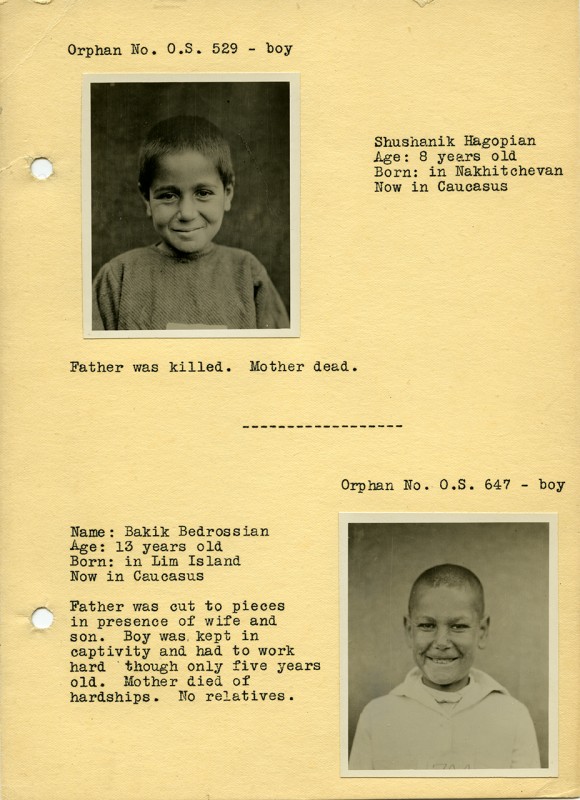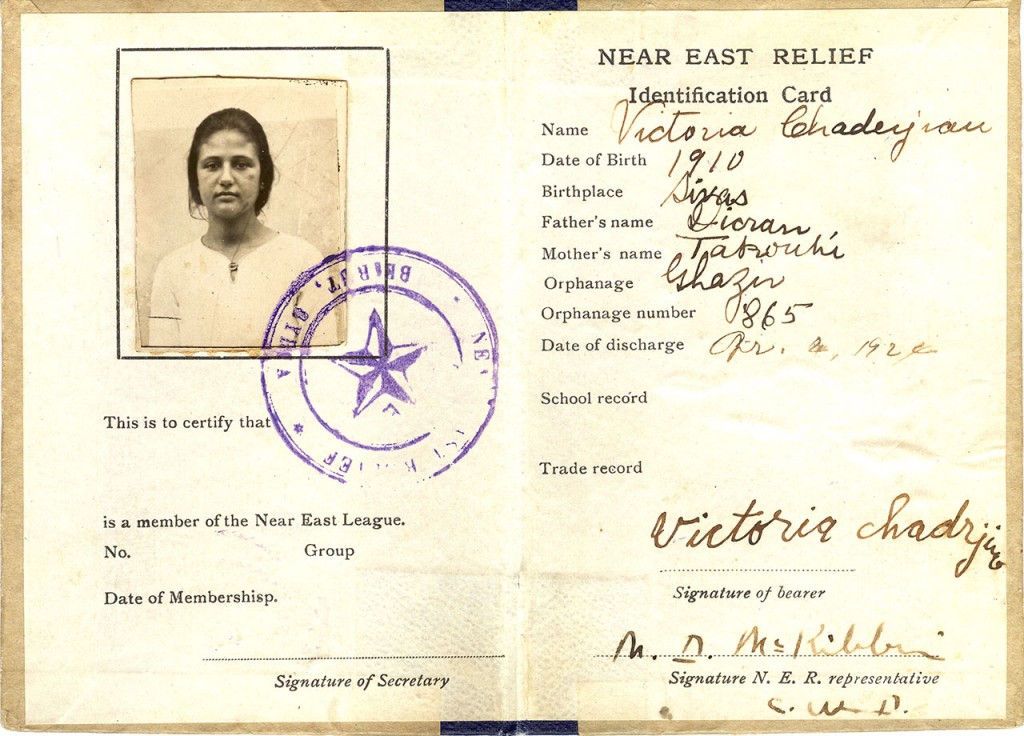VIDEO DISPATCH: IDENTIFYING THE CHILDREN OF N.E.R.
Our collection of historical photographs is second to none. But there is one thing that is usually missing: names. You can help!
PUTTING NAMES WITH FACES
If you’ve spent some time on the Digital Museum, you know the strengths of the Near East Foundation archival collection — especially our photographs. We have so many wonderful images of life in the Near East Relief orphanages. Looking through these pictures is like stepping back in time, to an era when childhood was very different from what we know now.

EXTRAORDINARY LIVES
The children of Near East Relief grew up under extraordinary circumstances. Most of the children in the orphanages had lost their parents to violence, starvation, or illness. Some children were rescued from Turkish homes by Near East Relief workers.
The oldest children had memories of a life before the orphanage; others remembered nothing but a desperate life on the road, scavenging for scraps of food and clothing with other children. For the youngest children, the orphanage was all they knew. They were raised in enormous institutions. They slept in large dormitories that doubled as classrooms, where they learned basic subjects like reading and mathematics. The children began training for a career at a very early age. By their early teens, they were working full-time during the day and attending classes at night.
This is not to say that the children of Near East Relief grew up without love. There was genuine affection between the relief workers and their young charges, but the ratio of children to adults was very high. The children were divided into groups of up to a dozen, and placed in the charge of an older boy or girl. These groups functioned as families within the orphanages.
Group leaders reported to “superior officers” who reported to adult staff members. For example, at Ortakeuy Orphanage in Constantinople, each older girl was placed in charge of four smaller children. The five children slept in adjacent beds, and the “mother” supervised the little ones’ health, cleanliness, and manners, making daily reports to the dormitory leader.

EARLY INDEPENDENCE
The children of Near East Relief grew up with an incredible level of independence. The boys and girls did most of the work at the orphanages. They tended the gardens, prepared and served meals, cared for livestock, did the laundry, and made most of the clothing — all of this in addition to attending classes and learning a trade.
The children were also often in charge of their own discipline. They organized courts to hear complaints and, if necessary, assign a punishment. In Corinth, a young girl slipped out of the orphanage to spend a few pleasant hours eating grapes in a nearby vineyard. She was brought before the orphans’ tribunal on charges of leaving the orphanage grounds and stealing grapes. The young judges sentenced the girl to wear a bunch of grapes around her neck, along with a sign that said “I stole grapes” for an entire day.
The orphans graduated at age 15 or 16 and entered their chosen professions. Traditionally, boys had apprenticed with their fathers and then taken over the family business; most girls had not worked outside of the home. The presence of thousands of orphans of the Genocide necessitated a new system: one in which both boys and girls could learn a trade, find a job, and earn enough money to support themselves.
Near East Relief helped the graduates to find both jobs and living situations. The young adults also received instruction in managing their money. Many orphanages provided small loans as seed money for graduates to start their own business. The graduates stayed connected through the Near East League, a busy social organization that also provided guidance through the transition to adulthood. The boys and girls were strongly encouraged to marry fellow orphanage alumni and start families of their own.

Near East Relief orphanage identification card. Gift of Victoria Palian.
THE IDENTIFIED CHILDREN COLLECTION
We know so much about how the children of Near East Relief grew up, but we know so little about who they really were. In most cases, we do not even know their names. We do not have lists of orphans in the Near East Foundation archives. Our wonderful collection of photographs does not include personal information. On rare occasion, a child is identified by first name in a New Near East magazine or in promotional materials.
We do have some wonderful exceptions to this rule in the archives. Former Near East Relief orphan Victoria Chadrjian Palian donated her identification card from Ghazir orphanage (above) to the Near East Foundation several years ago. We also have a few pages from a booklet with photos of children and brief biographical information. This document was probably used to recruit donors for Near East Relief’s direct sponsorship program.
NERHS has started the Identified Children Collection in the Digital Museum Archive in order to share these special photos. We’d love to build this collection by adding ID cards and photographs from former Near East Relief orphans.
The children of Near East Relief were not just survivors. They were the seeds that grew into today’s vibrant, strong communities. Help us remember them.
Share your family member’s Near East Relief ID card today! A digital image of the card will be added to the Identified Children Collection, where people will enjoy if for many years to come — you’ll keep the original. Together, we can help the world to remember the names, faces, and stories of the children of Near East Relief.

Girls from Ghazir Orphanage. Victoria Palian is in the front row on the right. Gift of Victoria Palian.
